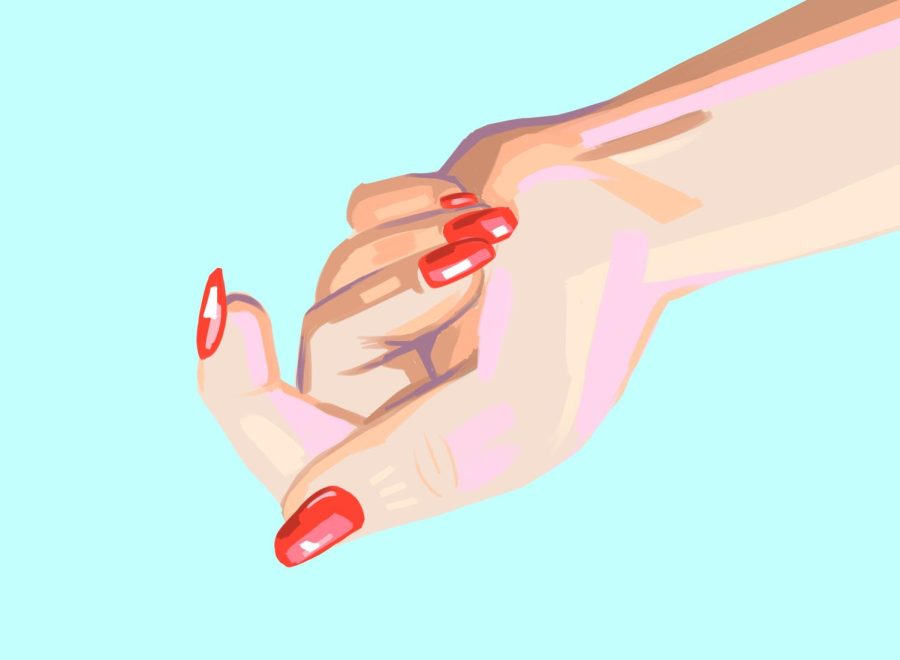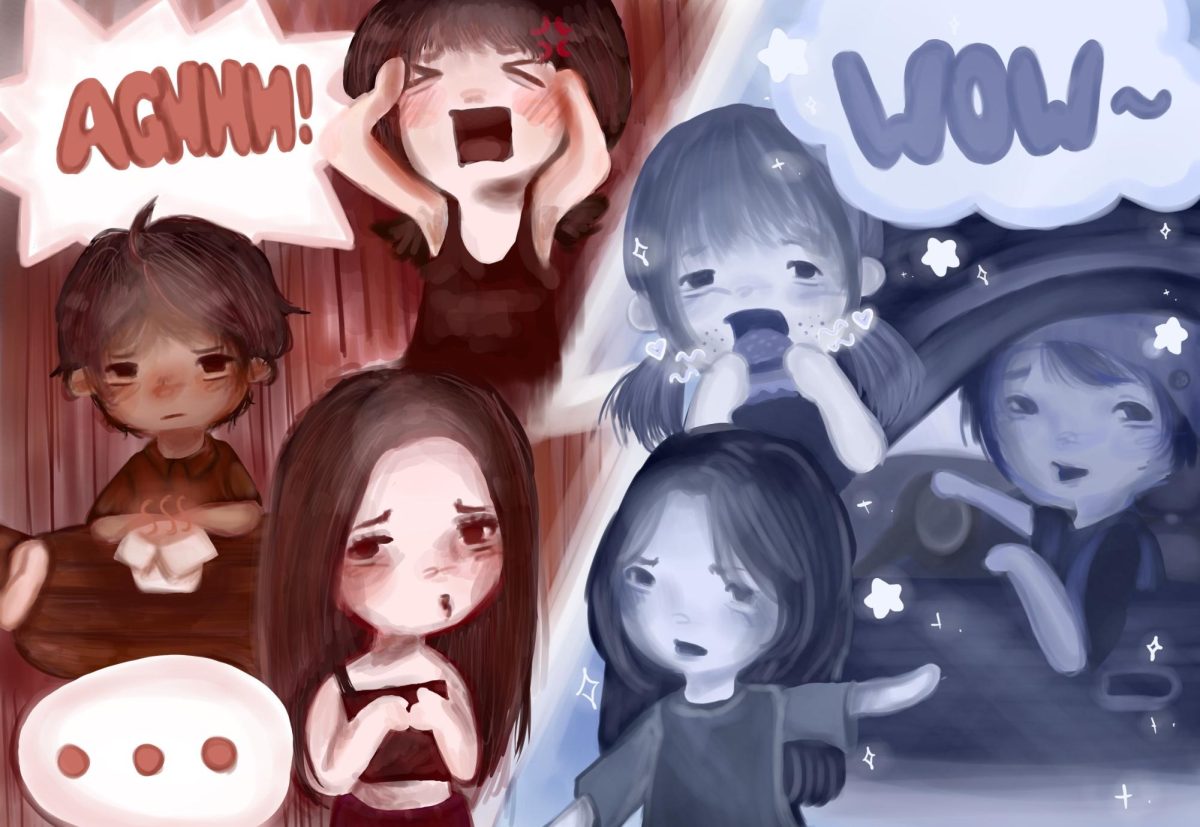If ambiguity was a color, it would be red.
Simultaneously representative of something as sweet as love yet also as vigorous as strength, red perfectly embodies femininity and women empowerment.
Over the years, however, the color has been dismissed as tacky and garish, and with the start of the decade, the trending neutral and muted tones — such as beige and taupe — have extinguished the blazing red flame.
But in January 2022, TikTok user Robyn DelMonte brought the “old-fashioned” color rightfully back into the media spotlight when she posted an explanation of her “red nail theory” — a startling speculation reflective of Sigmund Freud’s Oedipus complex, a psychoanalytic theory of boys unconsciously lusting after their mothers.
Though the complex hasn’t substantially been proven, psychological studies suggest that red enhances male attraction, as shown in a March 2008 American Psychological Association journal article by University of Rochester psychologists Andrew J. Elliot and Daniela Niesta.
“In the ‘90s, when we were growing up, women had red nails a lot, especially our moms,” DelMonte said in her video that has amassed 1.2 million views. “I weirdly think guys are attracted to red nails because it reminds them of their moms when they were growing up, taking care of them.”
DelMonte’s video garners media traction even today, more than a year after the original post. Uploaded under the user @girlbosstown, the TikTok video still influences teenagers to sport red nails to test the validity of her theory and whether it truly appeals to the male gaze.
Red is now, at least somewhat, back in style, but for all the wrong reasons.
This trending TikTok theory is intriguing, but it significantly diminishes what the color red truly means: female empowerment. The motive for wearing red shouldn’t be to appear more palatable to the male gaze; instead, red deserves revival for quite the opposite reason.
England banned red lipstick during the 1700s after women received accusations of unjustly seducing men into marriage with cosmetics. But the scorn for this shade of lipstick was not only limited to European countries.
During the same time period in the United States, “a marriage could be annulled if it was found that the woman had been wearing red lipstick during courtship,” according to the same article.
During the 1900s, suffragettes used red lipstick as a gesture of unity and rebellion to fight for women’s rights.
In 2018 in Nicaragua, supporters of an anti-government movement called themselves the “Red Lips Nicaraguan Women’s Organization” and became a symbol of resistance against the president.
And in 2019 in Chile, women wore red lipstick and red scarves on the streets when protesting against sexual assault.
Especially with PANTONE naming the Color of the Year 2023 as Viva Magenta, describing it as a “powerful and empowering… new animated red,” the color now symbolizes liberation from male oppression, confidence and resilient womanhood.
Though it’s not necessary to eliminate minimalistic tones from one’s wardrobe, red shouldn’t be shied away from either.
Rather than being stigmatized as “grandma’s pick” or out of style, this timeless color should be redefined.
Even with our fast-paced society that praises changing the status quo and breaking social norms, some things are just here to stay. Red is just as empowering today as it was in the past.
Red is bold. Red is liberating. And most importantly, red is women.














